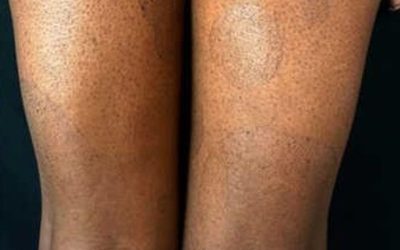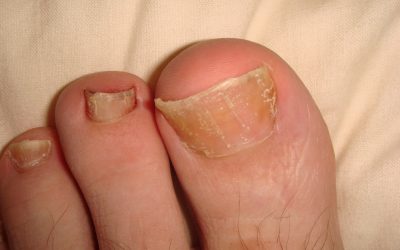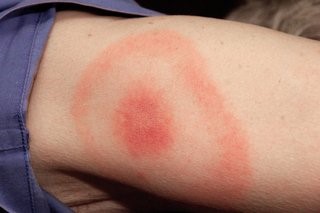Contagious IMPETIGA
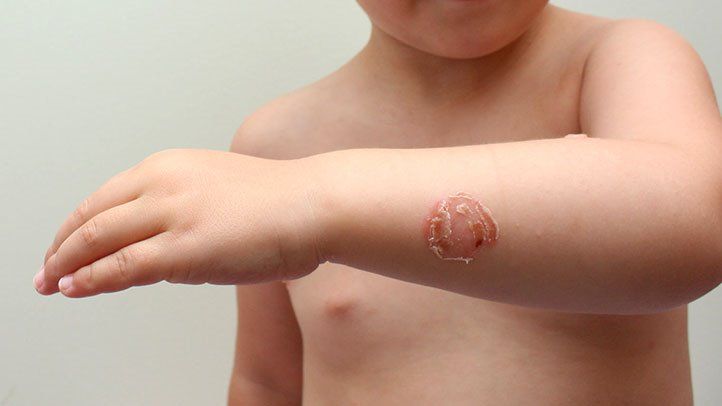
Impetigo (impetigo contagiosa, pyoderma) is a contagious bacterial infection of the skin that affects mostly children aged between two and five years, but can also affect older children and adults.
-
- Impetigo is most commonly caused by a bacterium called Staphylococcus aureus
- Less commonly, the infection is caused by another bacterium – group A streptococcus Streptococcus pyogenes
- Both bacteria can cause pyoderma
- Impetigo is usually spread from person to person through direct skin to skin contact
- Bacteria on healthy skin or through small cuts, scratches or other small openings (e.g. caused by insect bites) cause pyoderma
- Impetigo infection spreads easily, especially between people who live together or who often spend time together (e.g. in a kindergarten group).
Clinic
-
- Impetigo rashes are most often seen on the face, hands or feet;
- Symptoms such as fever, severe pain, increasing redness and swelling, or loss of appetite indicate a more serious infection. If you are bothered by the following symptoms, contact your healthcare professional urgently
Rashes:
-
- papules, vesicles and pustules (pustules);
- yellow, golden, brown scabs
- fluid-filled or flaccid blisters
- ulcers with raised edges

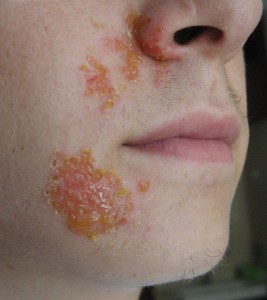
Forms of impetigo:
- Non-bullousis the most common form. Characteristic papules, vesicles with surrounding erythema (redness). As the rash progresses, abscesses appear, which quickly enlarge and break out to form a yellowish scab.
- Bullous – as the vesicles grow larger, blisters with yellowish fluid form. Blisters filled with fluid become cloudy, and brown scabs form when the blisters rupture.
- Ecthema – damage to the superficial (epidermis) and deep layers of the skin, resulting in painful sores with yellow scabs and raised edges.
Diagnostics
-
- Impetigo is usually diagnosed on the basis of clinical signs, symptoms
- Treatment can be started without any tests
- To determine the cause (which bacteria caused the disease), bacteriological tests (culture), gram staining
- As the disease spreads, blood tests may show an increase in the number of leukocytes in the blood and an increase in C-reactive protein.
Treatment
-
- See a dermatovenereologist for an accurate diagnosis and appropriate treatment
- Treatment of impetigo is important to reduce the spread of infection, reduce discomfort and improve appearance
- Blistering and non-bullous impetigo are treated with topical (applied) or systemic (oral tablets or capsules) antibiotics
- Local (topical) antibacterial treatment is used for patients with limited, localised skin lesions, while systemic treatment is used for patients with a widespread rash or deep lesions.
- Ectema is always treated with systemic medication.
Advice To reduce the spread:
-
- Wash your hands frequently with soap and water (no matter what you touch) or disinfect them
- Do not share personal items such as hairbrushes, towels, clothes, bedding (wash in hot water).
- Do not share personal items such as hairbrushes, towels, clothes, bedding (wash in hot water).
- If the rashes are wet, they must be covered. Use disposable wipes to blow your nose.
- If you sneeze, cover your mouth with your shoulder or forearm, otherwise bacteria from your nose and mouth will end up on your hands and anything you touch.
- Return to kindergarten, school – children can return 24 hours after starting effective antimicrobial treatment.
- If your infectious impetigo recurs, contact your dermatologist.
If you are unsure about your diagnosis and over-the-counter remedies from the pharmacy don’t help – seek help from a dermatologist!
The iDerma team will give you a consultation within 24 hours, explain your diagnosis and prescribe the necessary treatment remotely!

Our other articles
Paraneoplastic dermatological manifestation of gastrointestinal malignancies
rare disorders resulting from the immune system’s response to a cancerous process (neoplasia) in the body. Gastrointestinal neoplasms more often cause paraneoplastic syndromes affecting the skin.
Nail psoriasis
Psoriasis is a form of chronic systemic inflammatory autoimmune disease that mostly affects fingernails and toenails.
Lyme disease
It is contracted when a blood-sucking tick injects intestinal contents containing bacteria into a wound. Untreated Lyme disease can damage not only the skin, but also the internal organs, joints and nervous system.
iDerma
MB iDerma
Fabijoniškės g. 99, Vilnius
+370 670 70 822
info@iderma.lt

